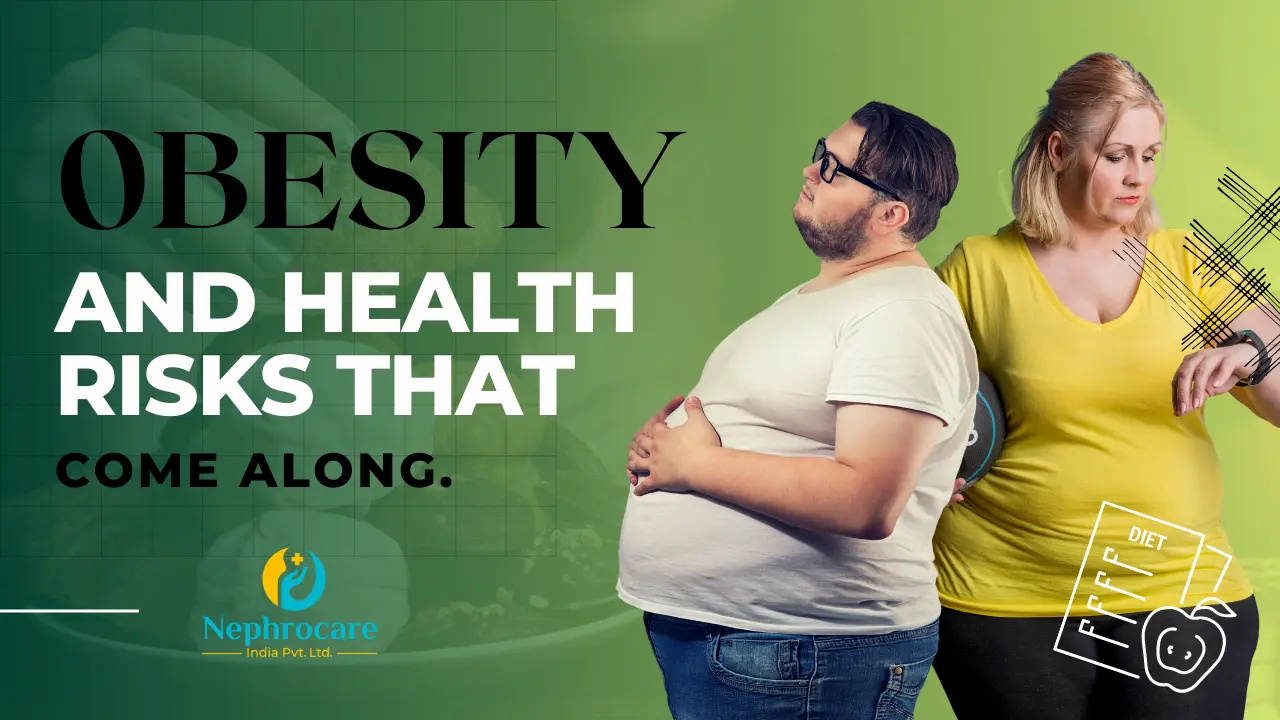
- 1701
- 3
Increased risk of obesity । Overweight and health risks that come along.
Weighty India – A bigger problem
We Indians are growing fatter over the past 15 years!!! India ranks 3rd in Global Obesity Index. So is India promoted from the status of a developing country to a developed country? Wow, the problem of facing the burden of undernutrition and infectious diseases is then over now. But sorry, the scenario is not so.
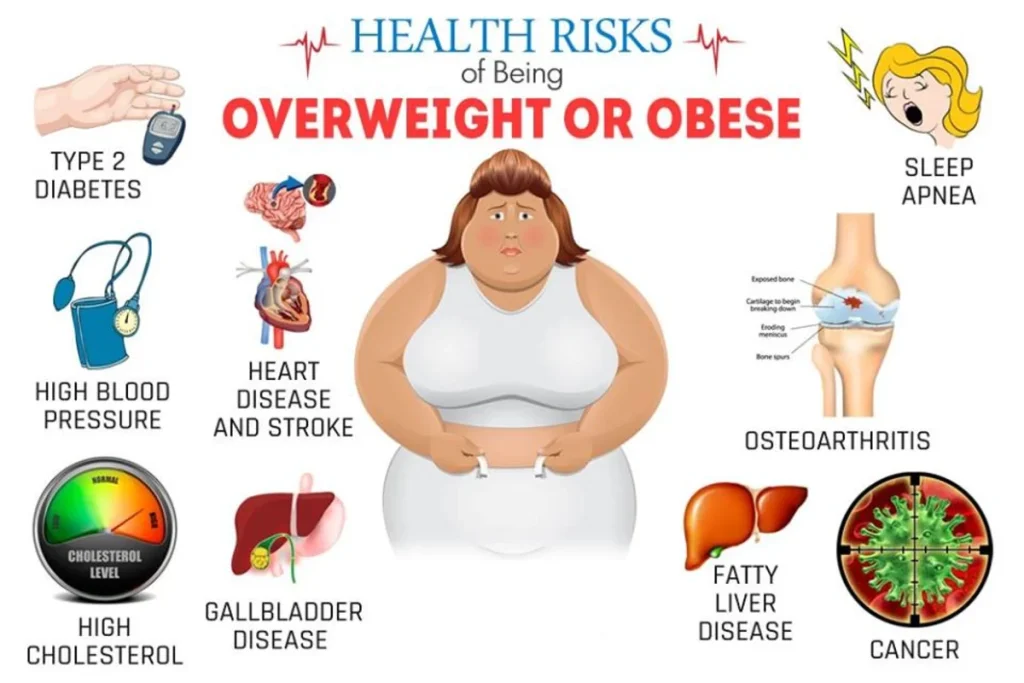
India is a developing country that is in a transitional state of under-nutrition due to poverty and obesity due to industrialization and rapid urbanization. The dual burden of underweight and overweight/obesity is alarming and needs to be considered.
The fifth and latest round of the National Family Health Survey (NFHS) conducted between 2019 and 2021, showed that about 6.4% of women and 4.0% of men aged 15-49 are obese.
Around 17.6% of women and 18.9% of men in the same age group are overweight, but not obese.
So what do we mean by obesity and overweight?
Overweight and obesity both are defined as abnormal or excessive fat accumulation that may impair health. A person is considered obese if his Body Mass Index (BMI) is above 30. The BMI is the ratio of a person’s weight to their height measured in kilograms per meter square of height (kg/m2).
For adults, WHO (World Health Organisation) defines overweight and obesity as follows:
- BMI greater than or equal to 25 – Overweight
- BMI greater than or equal to 30 – Obesity

For children, age needs to be considered when defining overweight and obesity.
A child’s BMI is evaluated based on their age and gender using a percentile chart. A BMI percentile between 5th and 85th is considered healthy, between 85th and 95th is considered overweight, and above 95th is considered obese.
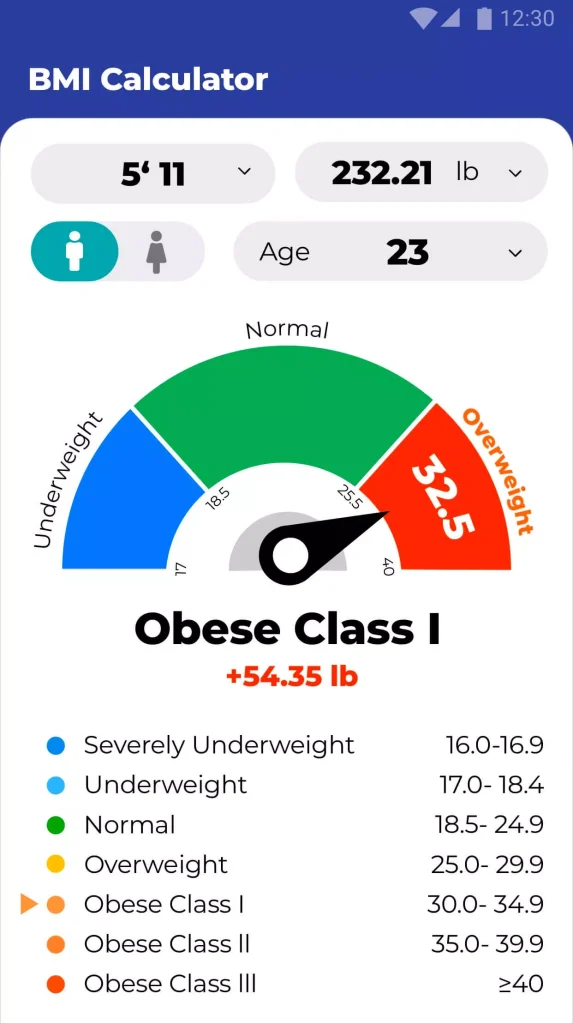
How do you calculate your own BMI?
- To find out your BMI, the calculation process is simple. You can do this yourself by using a handheld calculator or do this online via websites or apps containing body mass index calculators.
- To arrive at the result yourself, you simply divide your weight in kilograms by the square of your height in metres. Or simply input your height and weight in an app or website and the BMI results will flash on your screen.
- If the numbers show that your BMI is above normal or below the normal range, you should get yourself checked by a doctor at least once every six months or at least once a year.
The ideal BMI chart for men
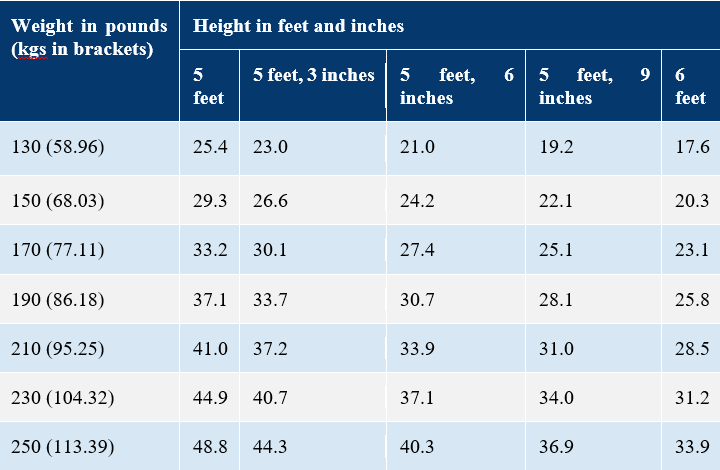
The ideal BMI chart for women
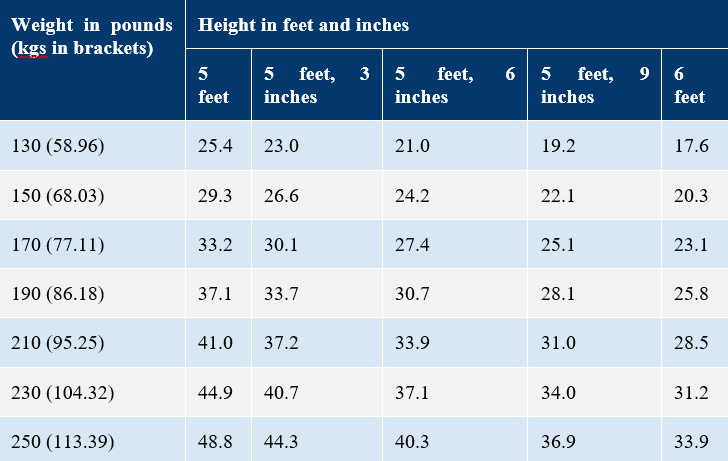
Are there any limitations to using BMI?
BMI has some limitations as it does not take into account the distribution of body fat, which can affect health outcomes. Moreover, BMI may not be accurate for certain populations, such as pregnant women or older adults. It does not even take into account factors such as muscle mass, bone density, and body composition. Therefore, it is important to interpret BMI in conjunction with other measures of health, such as waist circumference, blood pressure, and blood lipid levels.
Is waist-to-hip ratio a better marker of cardiovascular risk than body mass index?
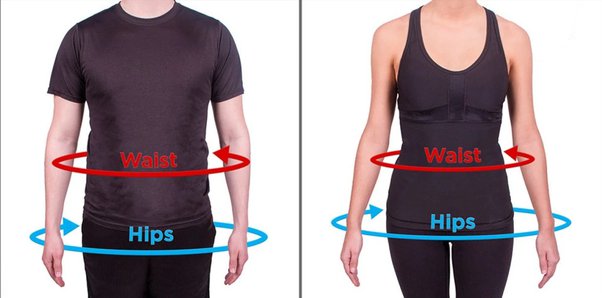
We can also use the waist-to-hip ratio (WHR) to measure abdominal obesity and to determine the risk of Cardio Vascular Diseases.
It’s calculated by measuring the waist and the hip (at the widest diameter of the buttocks) and then dividing the waist measurement by the hip measurement.
Men should have a waist to hip ratio slightly under a 1.0 and women should have a waist to hip ratio under 1.0 – a . 90 or lower.
What are the advantages of using WHR?
- This method has a good correlation with body fat as measured by the most accurate methods
- This method is inexpensive
- Waist-to-hip ratio predicts the development of disease and death in adults
Does the size and shape matter?
The answer is yes. However much we say that eternal beauty is the ultimate thing but ‘shape and size’ matter especially when it is allied with our health condition. The waist-to-hip ratio (WHR), especially after adjusting for BMI, is used as a parameter for central obesity (apple-shaped or pear-shaped obesity). Although, both the obesity traits have been shown to be highly heritable.
So how do you measure your waist to hip ratio?
You need a tape measure and a calculator. The steps are as follows:
- ➢ Measure your waist at the smallest point – usually at the naval or just above it
- ➢ Measure your hips at the widest, largest part
- ➢ Divide your waist measurement by your hip measurement (Waist Measurement ÷ Hip Measurement)
- ➢ Men: 0.99 or lower is good
- ➢ Women: 0.90 or lower is good
Obesity and Overweight – why does it occur?
The answer is our affection for a wealthier lifestyle. An energy imbalance between calories consumed and calories expended is the main reason behind this. This means an increased intake of energy-dense foods that are high in fat and sugars but decreased physical activity due to the increasingly inactive nature of many forms of work as a result of a wealthy lifestyle, changing modes of transportation, and increasing urbanization.
Age also appears to play a significant role in obesity and is common in the 40-49 age group.
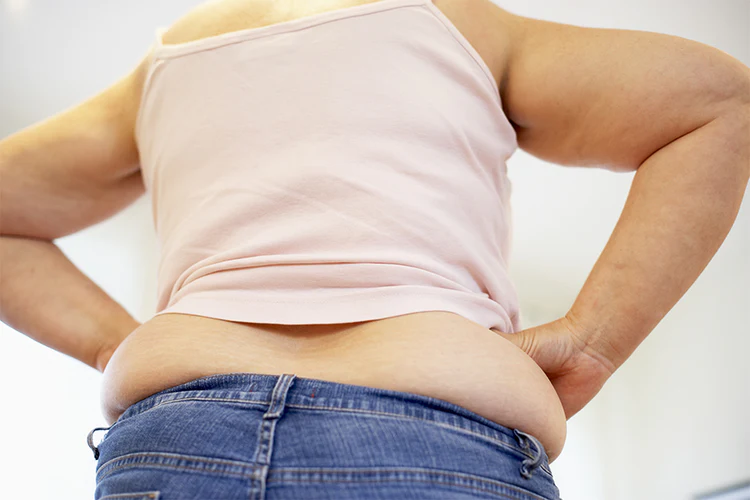
Environmental and genetic causes are also important for obesity. Increased appetite is a driving force for weight gain. Ghrelin and leptin are two of many hormones that control your appetite and fullness. Ghrelin is made in your stomach and signals your brain when you’re hungry and thus it promotes obesity. On the other hand, Leptin decreases your appetite.
Fatty, sugary, and processed foods have a negative impact on health, whether or not this manifests in the form of a widened girth. Some individuals may appear normal or even underweight but may be fatty on the inside due to poor dietary habits and lack of physical activity. These individuals are at higher risk of type-2 diabetes, cardiovascular diseases, fatty liver, and are prone to heart attacks, something which people suffering from obesity also face.
Obesity and the health risk
Overweight and obesity may raise our risk for certain health problems and may be linked to certain emotional and social problems such as:

- Increase the risk of heart disease due to high blood pressure and high cholesterol.
- Type 2 diabetes.
- Breathing problems, such as asthma and sleep apnea.
- Joint problems such as osteoarthritis and musculoskeletal discomfort.
- Gallstones and gallbladder disease.
- Higher risks of stroke, many types of cancer, premature death, and psychological illness
Childhood obesity is also associated with
- Psychological problems such as anxiety and depression.
- Low self-esteem and lower self-reported quality of life.
- Social problems such as bullying and stigma.
- Obesity as adults.
Importance of taste and exercise in the journey of weight loss
So, if you are overweight, reverse the clock. Discouraging as this state of health might be, please remember that you are not a lost cause. Give life a second chance. Take action right now to prevent crossing over into obesity. The first step is to make healthier lifestyle choices in your diet and exercise.
Take a Nutrition Consultation to stay fit- +918069841500
Comment
2023-05-19 02:43:04
Take a Nutrition Consultation to know your for intake routine- +918069841500
2023-05-15 12:34:39
How to control on my food intakes?
Check Your EGFR
***We Promise, no spam!



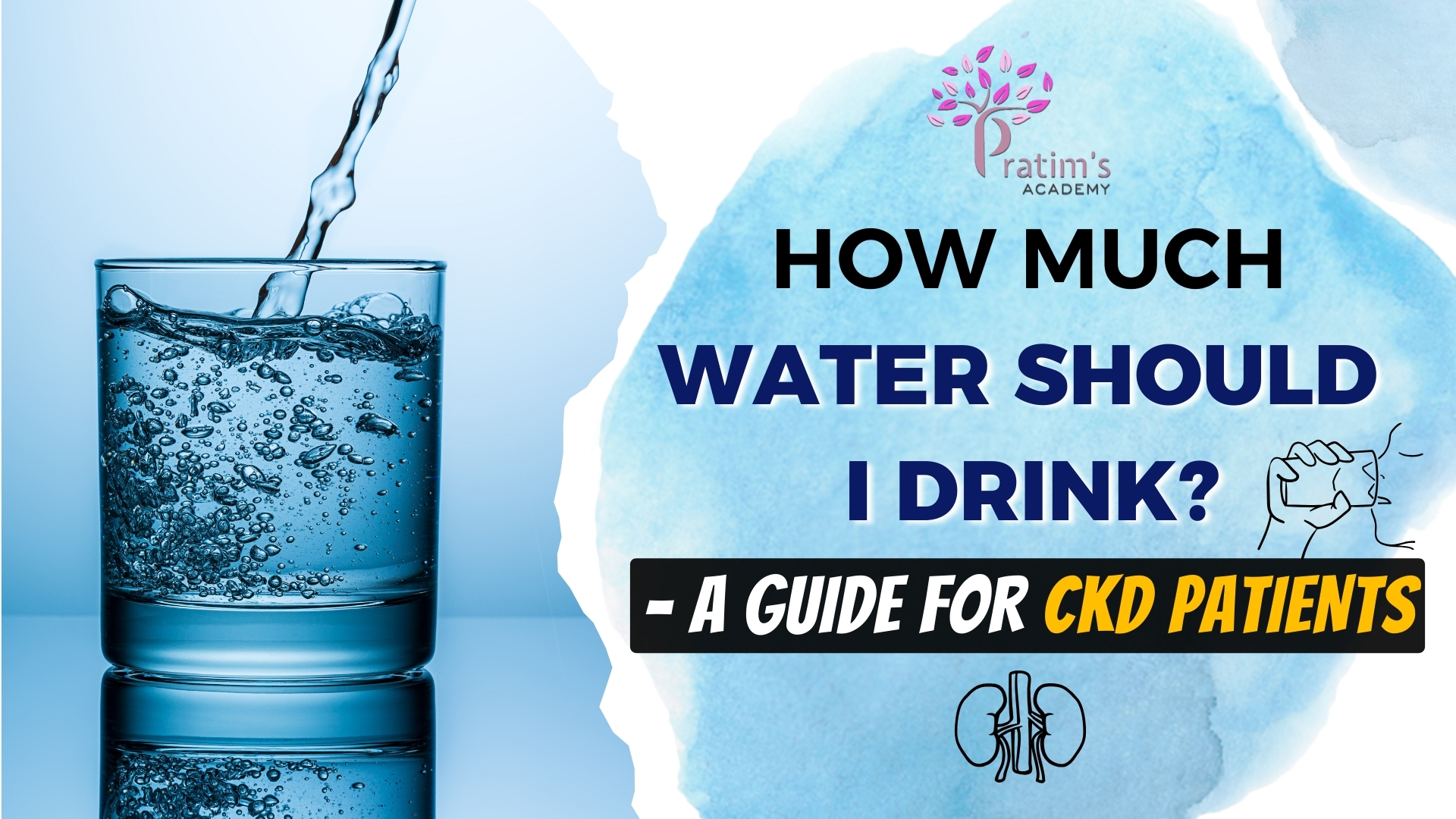



2023-09-21 15:17:44
I am Jibendranath Sarker from Bangladesh. My creatinine is 1.85, I am 72+ years old. I have no physical or loss of appetite problem. Please advise me about my diet. How many grams cooked rice is in 1 cup?
Thank you for your queries. Please join to our renal cooking Whats app group to know more: https://chat.whatsapp.com/HSHi8EWjSP47KxAtNCApur